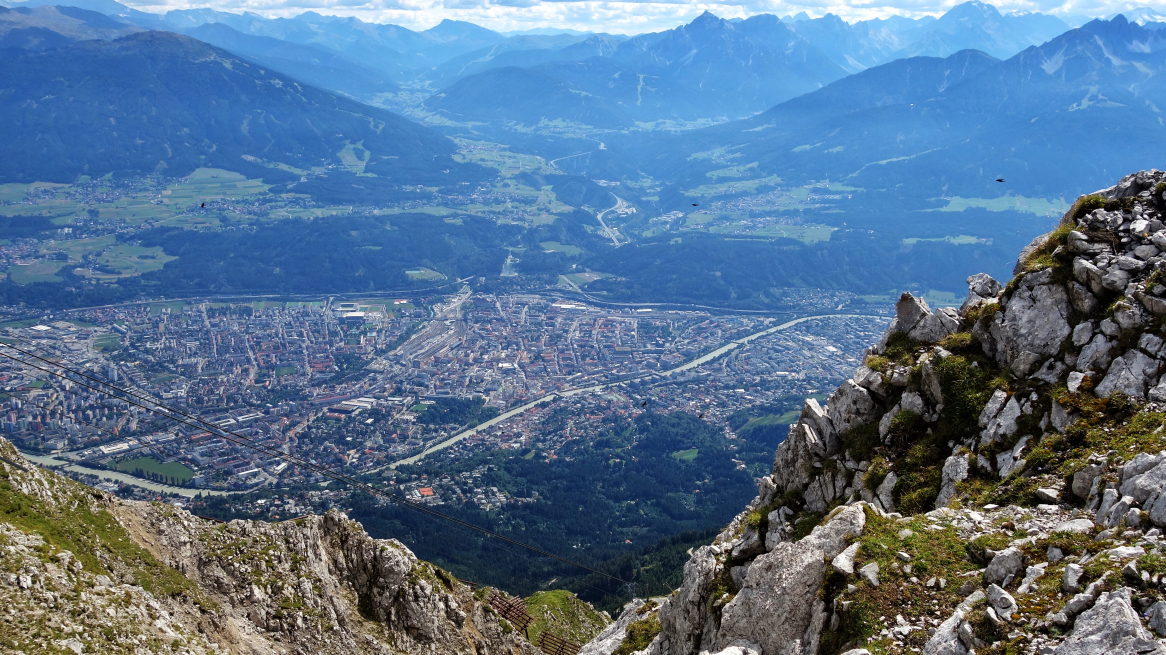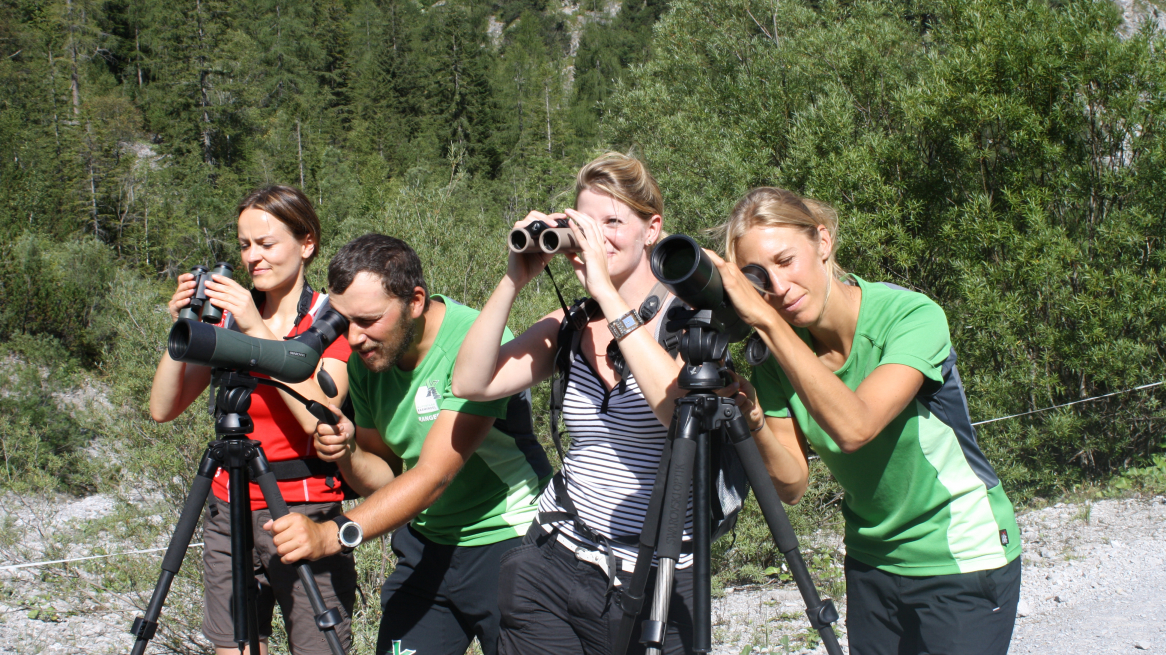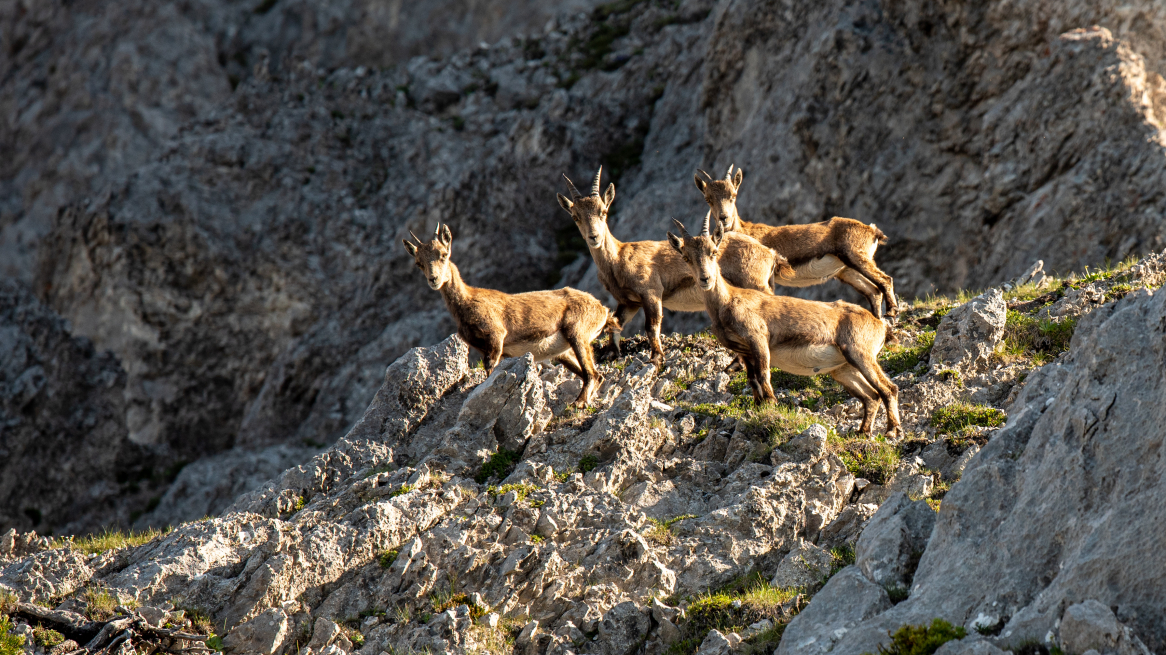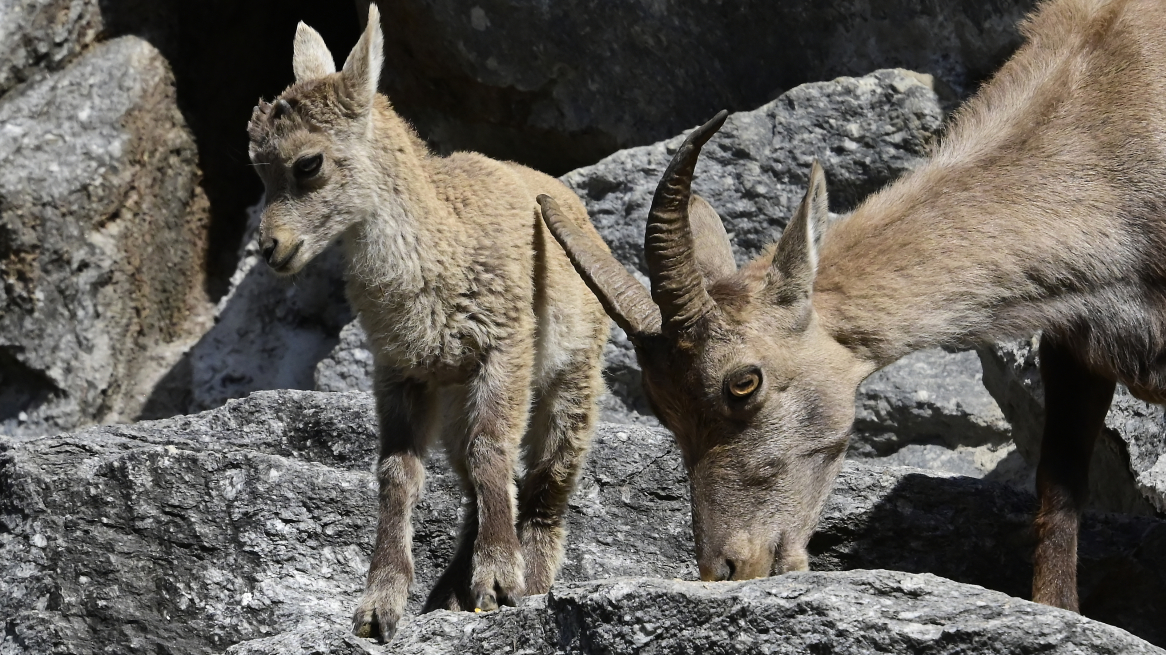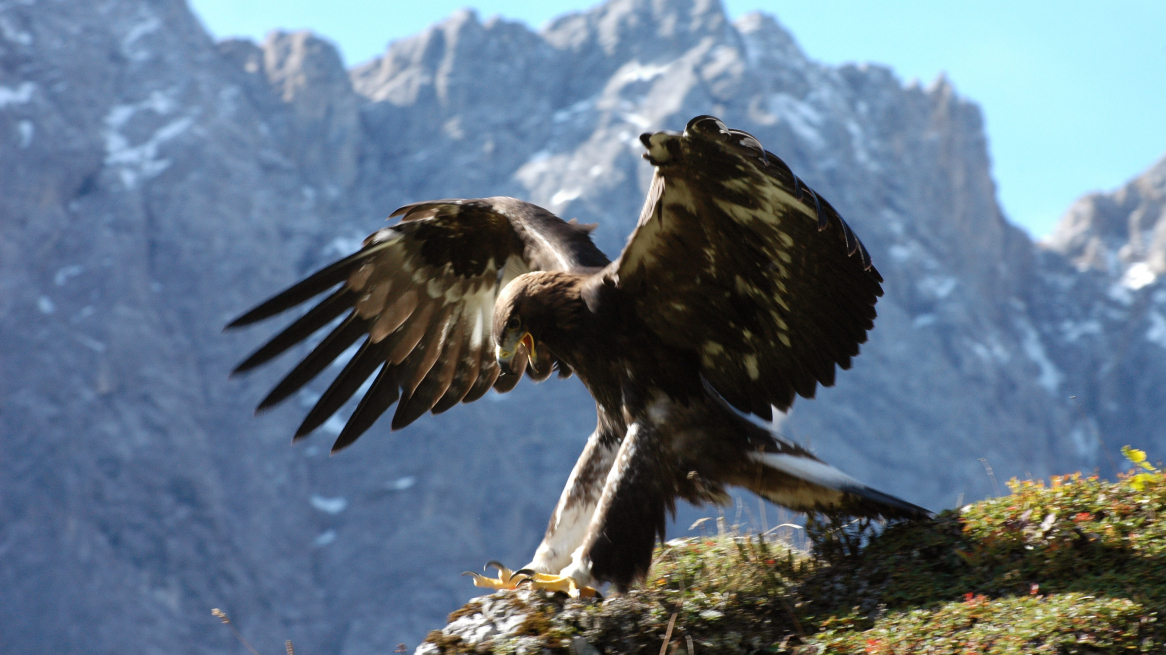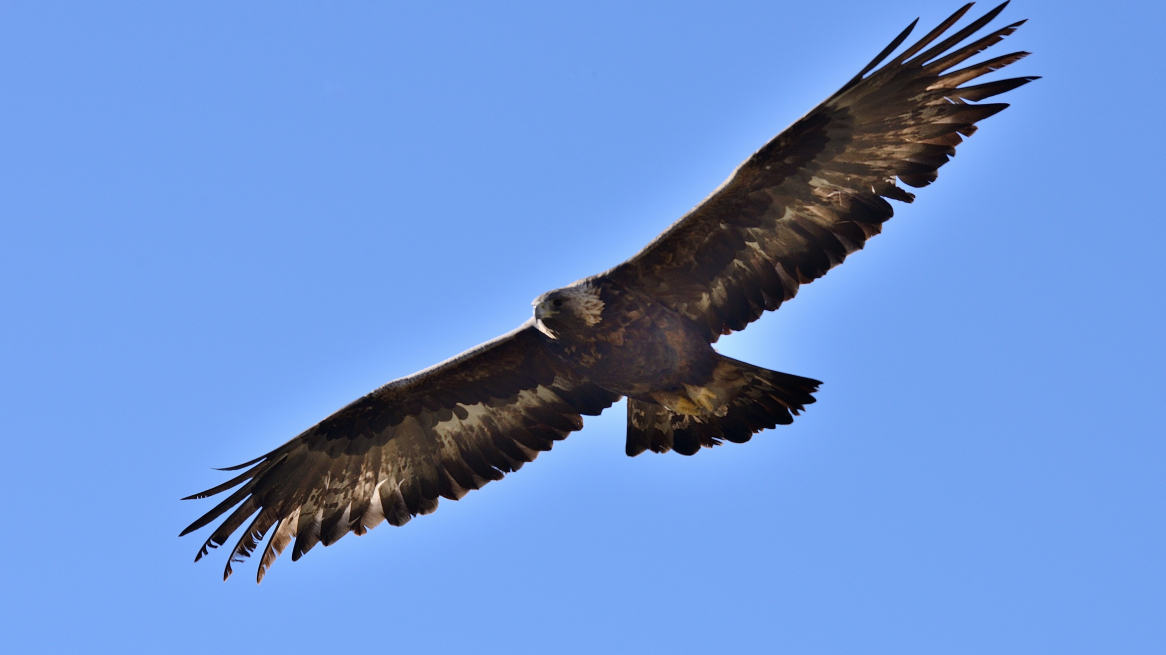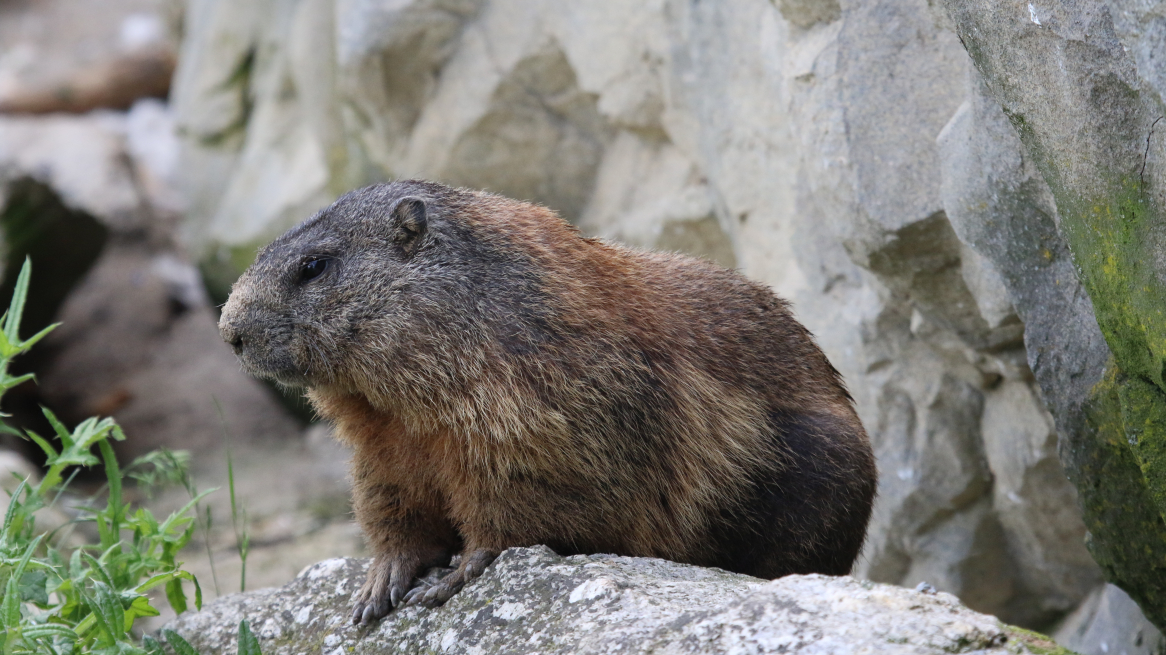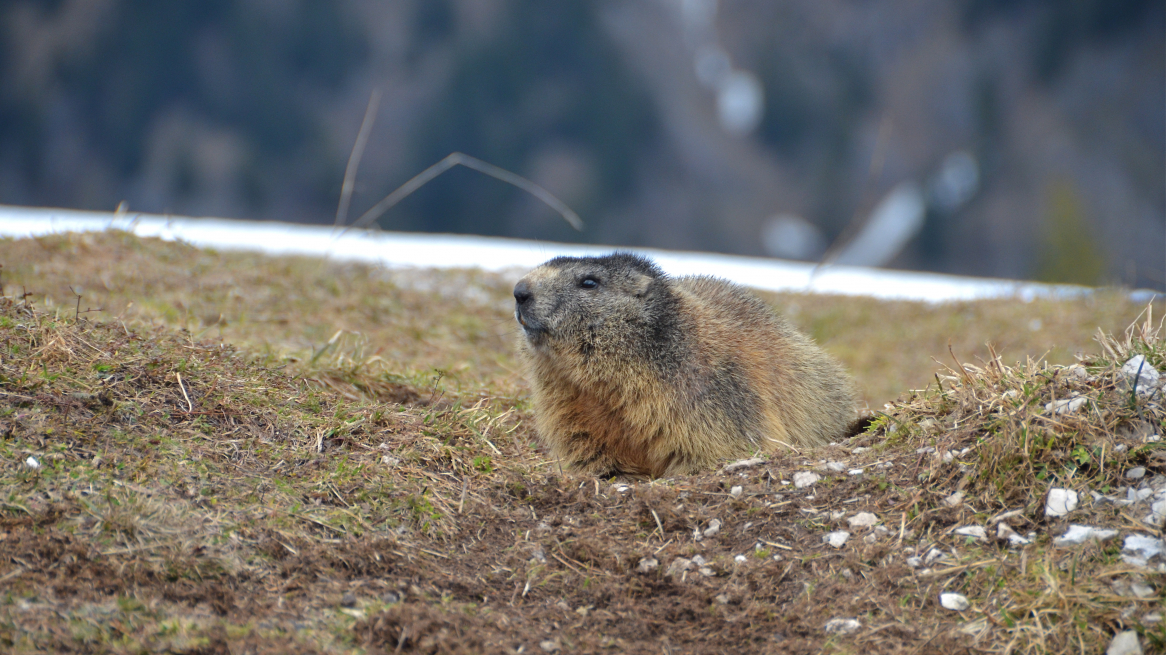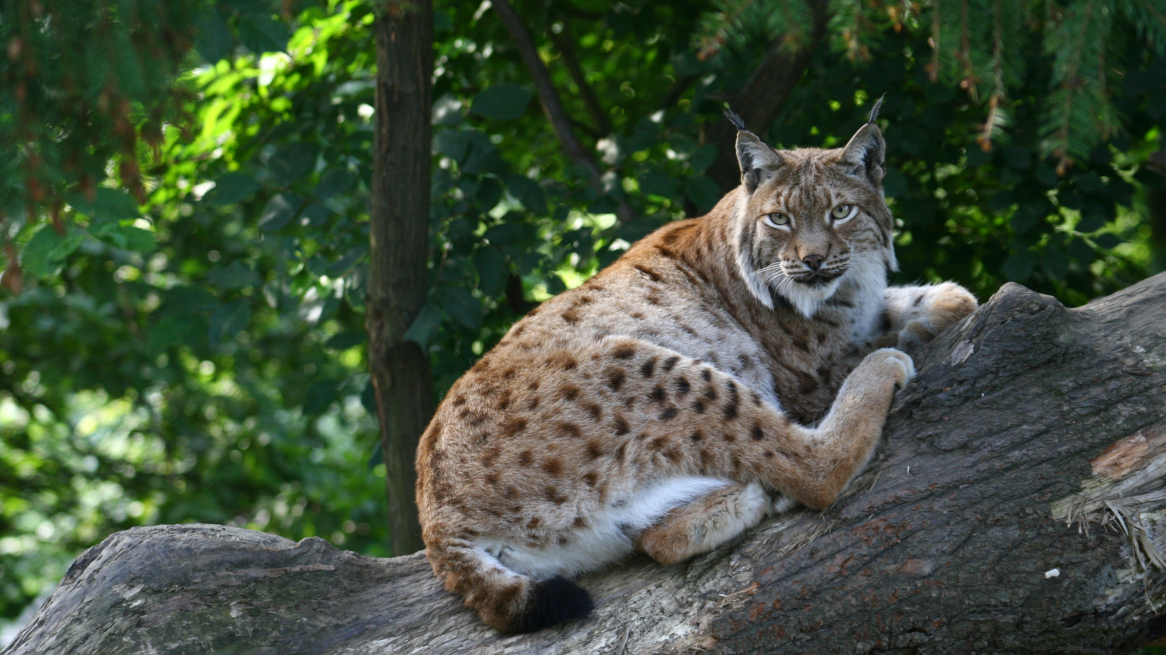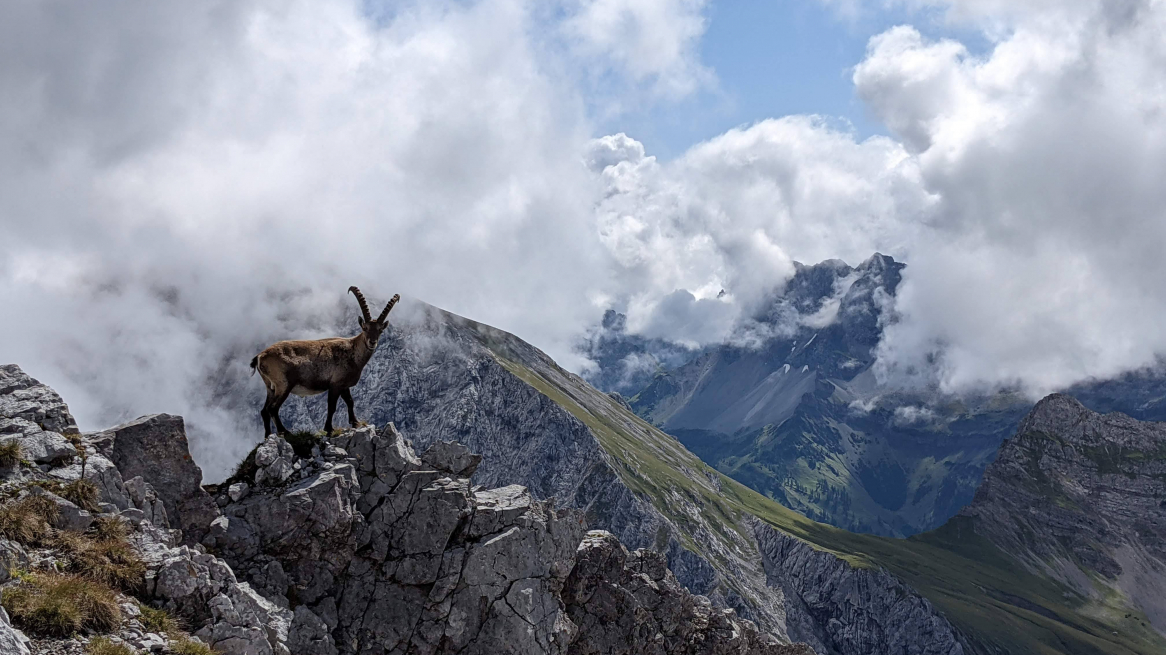
Eagles, chamois, marmots and ibexes. All of them alpine inhabitants that can be found in the wild in Innsbruck's mountains. This makes us unique as a provincial capital in the Alpine arc. So it's worth keeping your eyes open during hikes. And be sure to take binoculars with you.
Those who take the Nordkettenbahn up to Hafelekar in the summer months sometimes experience a real surprise. Below the top station, it is not uncommon to see fully-grown ibex sunbathing. Images that you are actually used to seeing at the Innsbruck Alpine Zoo. The unique zoo is a fantastic opportunity to study alpine animals up close. Quasi as a prelude to their exploration in the wild.
Whether in the area of Nordkette, around the Patscherkofel or in the Sellraintal: wildlife can very often be seen with the naked eye in Innsbruck's mountains. It is highly recommended to 'scan' the terrain with binoculars from time to time. Most of the time, hikers find marmots, chamois, ibex or even eagles.
At the Hafelekar you not only have a wonderful view of Innsbruck. If you have the leisure, you can also observe wildlife. Picture: W. Kräutler
Chamois, the graceful alpine animals
"Above all, chamois cavort in the mountains of Innsbruck," knows Sebastian Pilloni, one of the rangers in the Karwendel Nature Park."On our nature tours, we're almost certain to see chamois moving gracefully on the steep terrain." The Innsbruck Nordkette is part of the Karwendel Nature Park, which at 739 square kilometers is Tyrol's largest protected area. It stretches from Seefeld to Lake Achensee and from Innsbruck to the German border.
On particularly hot days, chamois love to slide on the last remaining snowfields. Animals large and small plunge down to the valley on all fours, and you can guess how much fun they have doing it.
Chamois and their fawns 'inhabit' the mountains of Innsbruck. Image: Naturpark Karwendel / Michael Schinner
Courageous climbers: the ibexes
Ibex are naturally a topic at Innsbruck Nordkette. Male animals with sometimes huge horns can be observed as well as the 'Steingaissen', which move around with their young in summer. Stone deer were long extinct in the Alpine region. More precisely, the animals fell victim to the erroneous belief that their blood and horns had miraculous healing powers. in 1712, the last ibex was shot in the Zillertal Alps. After only 60 ibex survived in the Gran Paradiso, the breeding and propagation of these wonderful alpine animals began at the beginning of the 20th century. The Innsbruck Alpine Zoo also plays an important role in this, as animals from the offspring are released into the wild every year.
Ibex goat with her fawn - wonderful to watch in the Alpine Zoo Innsbruck. Bild: Alpenzoo Innsbruck / Fritz Schmidt
Golden eagles observe the surroundings for hours. Those who know their vantage points can watch them again and again. Image: Naturpark Karwendel / Otto Leiner
Majestic: the golden eagle
The golden eagle is not for nothing the heraldic animal of our country. The majestic flight artists not only fly through our mountain world, they also love to sit on sometimes bizarre 'lookout points' to view the area.
Currently, about 200 pairs of golden eagles are breeding again in our country. So it is almost a matter of course that eagles can also be spotted in Innsbruck and the surrounding mountains. It is important to know that they love the updrafts on ridges, so they are not solely dependent on warm updrafts. "At the Nordkette they can therefore fully live out their flying skills," says Pilloni. However: golden eagles are virtually dependent on marmots. This is because they are the favorite food of these majestic birds, so to speak.
Golden eagles love to soar on rocky ridges in the updraft. That's why they can be seen at Nordkette. Image: Naturpark Karwendel / Michael Schinner
Marmots, the clowns of the mountains
"There aren't very many 'marmots' in the Nordkette area in Innsbruck," says Pilloni. The reason: the humus cover is not too thick due to the stony nature of this area. But this is necessary so that the chubby animals can build their complicated burrows with several entrances and exits.
Marmots need to make sure they eat enough fat during the summer months for their seven-month hibernation. Image: Alpenzoo Innsbruck / Fritz Schmidt
Hikers who are out and about in the Sellrain have a better chance of seeing these little earthlings. Most of the time they make themselves known by loud whistles, which are emitted by the marmot guards to warn of eagles or people.
The reason why marmots are usually well-fed is simple: during their hibernation, which lasts seven months, they need a lot of energy. They eat this energy during the five or so months they are awake, at the end of which they look really chubby.
The perfect camouflage of the marmots is not by chance: they are the main prey for the golden eagle. Image: Naturpark Karwendel
Mysterious and shy: the lynx
Lynx are not permanent guests in the 'urban area' of Innsbruck. "But they do pass through from time to time," explains nature park ranger Sebastian Pilloni. The reason: lynxes love forests and are very shy. "The prey animals of lynxes are mainly deer, which they find in the forests." With their very light-sensitive eyes, lynx can detect a hare at 300 meters, and a deer even at 500 meters.
These wonderful cats are very shy and 'secretive' forest dwellers, so to speak. They need a territory larger than 100 square meters. At the beginning of the 20th century, lynx were completely extinct in the Alpine region. In Switzerland they were reintroduced from 1970, followed by Austria and Slovenia.
Lynxes are the secret stars of the Innsbruck Alpine Zoo. They are rarely seen in the wild in the greater Innsbruck area. Image: Alpenzoo Innsbruck / Fritz Schmidt
My tips:
A visit to the Innsbruck Alpine Zoo is a wonderful way to see Alpine animals up close. Click here for the zoo's website.
Rangers of the Karwendel Nature Park are very popular. A listing of guided hikes can be found on the nature park's website.
Rate this article
Show me the location on the map
A volunteer at the "Schule der Alm" alpine farming school, cultural pilgrim, Tyrol aficionado and Innsbruck fan.
Similar articles
Board the train at your home station, a leisurely dinner, perhaps a nightcap before going to bed,…
Spring has arrived and the snow has started to melt in the mountains. Spring flowers and trees…
Mrs. Holle has generously provided us with a fresh blanket of snow. An impressive 50 centimetres fell…
The barn with the ski rental on Igl's village square is getting a bit long in the…

